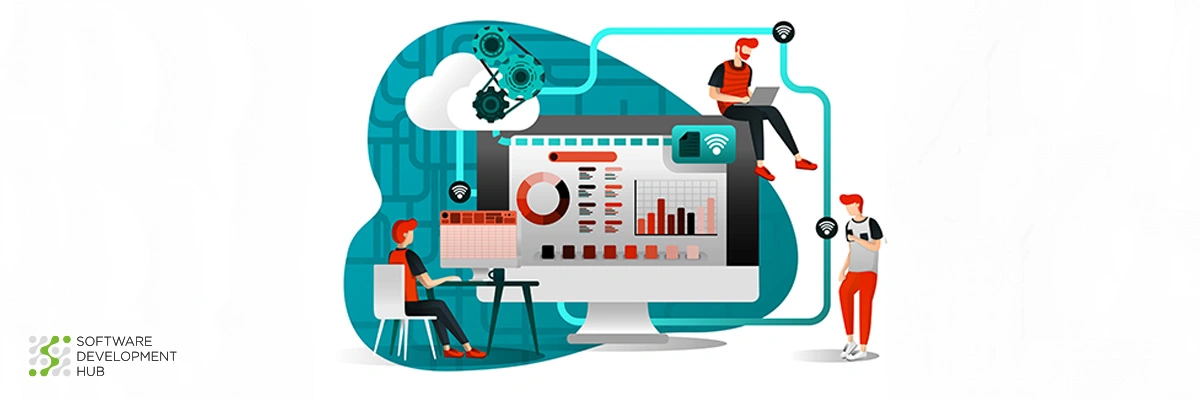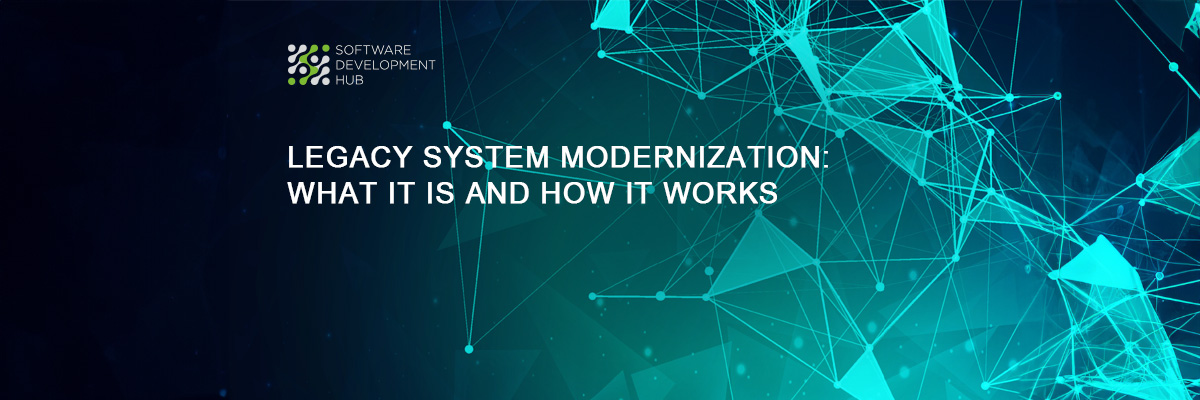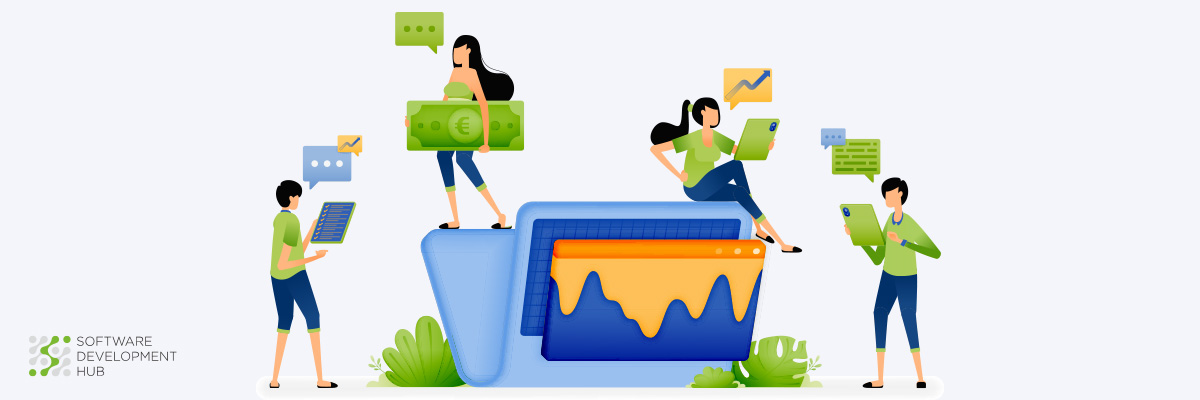Cloud Migration Battle in 2025: AWS vs. Google Cloud vs. Azure vs. Digital Ocean vs. on-Premise
The cloud migration landscape of 2025 presents businesses with unprecedented choices. When comparing AWS vs GCP vs Azure, each platform offers unique advantages. Amazon Web Services (AWS) currently dominates with coverage across 245 countries, while Google Cloud Platform (GCP) services extend to more than 200 territories worldwide. These market leaders deliver distinctly different capabilities – AWS excels at rapid application deployment, often within minutes, whereas GCP boasts network throughput that's nearly triple that of its competitors.
What differentiates these platforms beyond marketing materials? This article examines the critical factors that should inform your migration decision, from technical performance metrics to long-term cost implications. We'll explore the strengths and limitations of each platform in the AWS vs Azure vs GCP comparison, giving you the practical insights needed to align your cloud provider selection with your specific business requirements and growth objectives.
Key drivers for migration in 2025
Several compelling factors are accelerating cloud adoption in 2025:
Cost optimization and financial efficiency: Cloud migration delivers substantial financial benefits by eliminating expenses related to physical data center maintenance, hardware procurement, power, and cooling. Organizations pay only for resources they use, allowing dynamic scaling based on actual demand rather than projected capacity. IDC forecasts global public cloud spending to reach USD 805 billion in 2024 and double by 2028, with a 19.4% growth rate over five years.
Unprecedented scalability: The cloud's inherent scalability eliminates traditional barriers to growth, enabling organizations to adjust resources in response to fluctuating workloads without extensive infrastructure upgrades. This elastic approach ensures optimal performance during peak demands without wasting resources during slower periods.
Enhanced security and compliance: Major providers invest heavily in security measures, including encryption, multi-factor authentication, and regular security audits. Cloud environments facilitate data protection through automated software updates and security patches. Moreover, cloud migration improves disaster recovery capabilities, maintaining business continuity with minimal downtime.
Advanced technology access: Cloud migration grants immediate access to cutting-edge technologies and innovations without significant upfront investment. The cloud landscape in 2025 features sophisticated AI integration, advanced analytics capabilities, and emerging technologies like quantum computing. This technological advantage allows businesses to remain competitive in rapidly evolving markets.
Performance improvements: Organizations benefit from faster processing speeds and optimal application performance through access to the latest advancements in server and network technology. Globally distributed data centers and content delivery networks minimize latency by serving content from geographically proximate locations.
Environmental sustainability: Cloud providers achieve higher energy efficiency due to their scale, optimizing server utilization through more energy-efficient hardware and advanced cooling techniques. This focus on sustainability aligns with corporate social responsibility goals, becoming a priority for many organizations.
Operational agility and innovation: Cloud environments foster innovation by freeing skilled employees from routine data center maintenance, allowing them to focus on business development. This shift promotes a culture of innovation, agility, and continuous learning essential for maintaining competitive advantages.
Data explosion management: The exponential growth of data necessitates more sophisticated cloud-based storage and analytics solutions. Cloud environments provide the infrastructure needed to effectively manage, process, and derive insights from massive datasets.
As we progress through 2025, cloud migration continues to serve as the cornerstone for modern business transformation, enabling organizations to innovate, scale, and optimize operations in increasingly sophisticated ways.
Comparing Cloud Platforms: Technical Capabilities
Choosing the optimal cloud platform requires a thorough grasp of the technical capabilities each major provider offers. The differences in computing power, storage solutions, networking infrastructure, and AI integration directly influence migration success and long-term operational effectiveness. Let's dive into a cloud comparison of Azure vs AWS vs Google Cloud to understand their unique offerings.
Computing power and performance benchmarks
The computing foundation of cloud platforms shows significant variations in architecture, performance metrics, and scalability options. AWS currently leads the market with the most comprehensive service catalog, exceeding 250 services, while Azure follows with over 200 services, and Google Cloud Platform (GCP) matches Azure in service quantity.
Amazon's Elastic Compute Cloud (EC2) functions as its primary computing service, offering a robust platform with support for Intel, AMD, and Arm processors, along with GPU-powered servers for demanding computing workloads. AWS further distinguishes itself through specialized compute services like Amazon Elastic Container Service and Lambda for serverless computing.
Microsoft Azure responds with its own suite including Azure Virtual Machines, Container Service, and Azure Functions. These offerings allow organizations to operate virtual machines and adjust computing resources based on actual demand. Azure Functions particularly stands out by enabling event-driven execution without the burden of infrastructure management.
Google Cloud's Compute Engine allows users to create and run customizable VMs and automate container deployment. Performance benchmarks comparing medium-tier VPS instances across providers reveal notable efficiency differences. These evaluations measured web server response times under maximum load conditions without generating errors.
For organizations where network performance is critical, Google's virtual machines have demonstrated nearly triple the network throughput compared to AWS and Azure. This significant advantage makes GCP especially suitable for high-performance computing workloads.
DigitalOcean, though often overlooked when comparing AWS vs Azure vs Google Cloud, provides competitive VPS options with particular strengths in performance stability and consistency. Performance evaluations measuring the coefficient of variation (representing stability throughout testing) showed that lower numbers indicate better stability.
Storage options and data management
Storage capabilities constitute another decisive factor for cloud migration projects. AWS provides diverse storage solutions including Simple Storage Service (S3), Relational Database Service (RDS), and DynamoDB. These services span options from object storage to fully managed database services.
Azure's storage portfolio includes Blob Storage, Data Lake Storage, and SQL Database. The platform particularly excels in integration with Microsoft's broader ecosystem, offering substantial advantages for organizations already invested in Microsoft technologies.
Google Cloud Storage (GCS), BigQuery, and Cloud Spanner form the foundation of GCP's storage offerings. GCP has established a particularly strong position in big data analytics with tools like BigQuery for high-speed SQL queries and Looker for business intelligence.
How do these platforms compare in actual performance? Benchmark testing reveals significant differences in storage capabilities. Read and write tests conducted separately showed varying speeds across providers, with higher speeds directly affecting general application responsiveness and website performance. Storage throughput testing highlighted differences in read versus write performance ratios, which impacts applications with different access patterns.
Each provider offers tiered storage options with hot storage for frequently accessed files and cold storage for archival data, the latter being more cost-effective but with slower retrieval times. All major providers implement automatic replication and backup systems to ensure data durability.
Networking capabilities
Networking infrastructure serves as the foundation connecting cloud services, significantly impacting performance, security, and reliability during migration. AWS provides Amazon Virtual Private Cloud (VPC), Route 53, and CloudFront as its core networking services. AWS currently maintains the largest number of data centers globally.
Azure's networking revolves around Virtual Network, Traffic Manager, and Content Delivery Network. Azure has achieved the most extensive regional coverage among major providers, benefiting organizations with geographically dispersed operations.
Google Cloud Network (GCN), Cloud Load Balancing, and Cloud CDN constitute GCP's networking solutions. Uniquely, GCP implements a global VPC spanning multiple regions as a global resource, unlike the region-specific approach of AWS and Azure.
Network architecture differences significantly affect migration complexity. With Azure, virtual networks (VNets) exist in one region, and resources in different VNets can communicate by default. AWS VPCs similarly exist within regions but differentiate between public and private subnets for internet access. GCP's approach with global VPC spans multiple regions, automatically creating subnets in each region.
Connectivity between networks varies across providers. All three support peering but not transitive peering, requiring hub-and-spoke solutions through gateways for connecting multiple networks. Azure implements Hub-and-Spoke with gateway transit, AWS uses transit gateways, and GCP offers shared VPC for centralized management.
When considering DigitalOcean vs Azure or DigitalOcean vs Google Cloud, it's important to note that DigitalOcean's networking capabilities are more streamlined, focusing on simplicity and ease of use for smaller-scale deployments.
AI and machine learning integration
Artificial intelligence and machine learning capabilities have become decisive factors in cloud platform selection. AWS offers extensive AI services including SageMaker, Rekognition, and Lex. The platform even provides quantum computing exploration through Amazon Braket.
Azure delivers approximately 200 artificial intelligence and machine learning services, including Machine Learning, Bot Service, and Cognitive Services. Microsoft has heavily invested in its AI infrastructure to compete with Google's traditional strength in this area.
Google Cloud Platform excels in AI applications, emphasizing open-source technologies. Its AI Platform, Cloud AutoML, and Cloud TPUs leverage Google's expertise in machine learning. GCP's Vertex AI Studio provides tools for prompt design, tuning, code completion, and image generation with Imagen models.
All three major providers integrate AI to enhance their cloud services through automation, decision-making, and scalability. This integration impacts migration by enabling automated provisioning, scaling, error detection, and security monitoring.
For organizations prioritizing AI capabilities in their cloud migration strategy, each provider offers distinct advantages. AWS provides the broadest ecosystem, Azure delivers strong enterprise integration, particularly with existing Microsoft products, and Google maintains its edge in cutting-edge AI research implementation.
DigitalOcean, as a smaller provider, offers fewer AI-specific services but provides reliable infrastructure for organizations that wish to implement their own AI solutions with more customization control.
Cloud Migration Strategies for Different Platforms
Migration strategies differ significantly across cloud platforms in 2025, with each provider offering distinct approaches to streamline the transition process. Selecting the appropriate strategy plays a crucial role in minimizing business disruption while maximizing the benefits of cloud adoption. Let's explore the strategies for AWS, Google Cloud, Azure, and DigitalOcean, as well as considerations for hybrid cloud solutions.
AWS migration approach and tools
AWS delivers comprehensive migration pathways built around their widely-recognized "7 Rs" framework: Retire, Retain, Rehost, Relocate, Repurchase, Replatform, and Refactor. For enterprise-scale migrations, AWS typically recommends rehost (lift-and-shift), replatform, relocate, and retire as the most frequently implemented strategies.
The rehosting approach enables organizations to transfer applications without modifications, making it ideal for quick migration from physical, virtual, or competing cloud environments. This method allows applications to continue serving users during the migration process, minimizing operational disruption. AWS Application Migration Service automates this complex process, handling the intricate task of replicating workloads to AWS infrastructure.
For organizations looking beyond basic rehosting, AWS supports replatforming (lift and reshape), which introduces targeted optimizations during the migration journey. This approach helps businesses leverage powerful cloud capabilities like managed services while preserving application familiarity.
How does AWS help with planning? The platform provides specialized tools for discovery, planning, and recommendation that identify IT assets, dependencies, and requirements across application portfolios. These tools help organizations develop detailed migration roadmaps based on thorough workload analysis and business priorities.
Google Cloud migration methodology
Google Cloud structures its migration approach through a framework consisting of four distinct phases: Assess, Plan, Deploy, and Optimize. This methodology guides organizations through the complexities of transitioning workloads while reducing potential risks.
For large-scale migrations, what does Google recommend? Establishing a "Migration Factory" – a specialized team structure with clearly defined processes that enable efficient cloud transitions. This approach addresses common migration challenges including unclear objectives, insufficient sponsorship, inadequate planning, and limited delivery capabilities.
Google Cloud implements the Gartner-style "6 Rs" model for migration categorization:
- Rehost (lift-and-shift): Moving workloads with minimal modifications
- Replatform (move and improve): Modernizing workloads during migration
- Refactor (rip and replace): Completely redesigning applications for cloud-native capabilities
Based on this framework, Google categorizes migration approaches as tactical (lift-and-shift), strategic (move and improve), or transformational (complete redesign) according to business objectives and cloud maturity. This nuanced classification helps organizations select the most appropriate path for each specific workload.
Azure migration framework
Microsoft's Azure migration strategy centers on the Cloud Adoption Framework, providing structured guidance and best practices for each stage of cloud adoption. This framework helps organizations confidently migrate to Azure while achieving their specific business outcomes.
Azure Migrate functions as the central service for migration planning and execution, helping organizations discover, assess, and migrate on-premises infrastructure. The tool offers a unified platform for migrating servers, databases, web applications, and virtual desktops with minimal operational downtime.
The framework advocates an incremental approach to migration, beginning with limited-scope efforts before expanding to additional workloads. This progressive strategy allows organizations to learn from initial experiences and continuously improve their migration processes.
Azure's migration methodology includes thorough readiness assessments through the Strategic Migration Assessment and Readiness Tool. This preparation phase helps organizations evaluate their preparedness for implementing cloud migration solutions at scale.
DigitalOcean migration process
DigitalOcean provides a streamlined migration process focused on cost efficiency and simplicity. Their approach includes free migration services until go-live, with expert teams managing the transition. Organizations migrating from major providers like AWS, Google Cloud, or Azure to DigitalOcean have reportedly reduced costs by 30% or more.
The DigitalOcean migration strategy encompasses:
- Developing customized solutions and migration plans
- Providing best practices guidance for team preparation
- Creating dry-run migration plans to minimize downtime
- Offering infrastructure credits to avoid paying for two cloud providers simultaneously
For organizations with write-heavy database workloads requiring minimal downtime, DigitalOcean recommends using proxy software like ProxySQL to reroute queries after migration. This approach requires updating only one set of connection parameters instead of reconfiguring all applications accessing the database.
On-premise to cloud transition planning
Effective on-premise to cloud migration demands thorough assessment of workloads and environments. Organizations must determine which applications can tolerate downtime and which require zero-downtime transitions. This analysis shapes the migration approach for each workload.
Regardless of the destination platform, successful transitions depend on developing comprehensive rollback strategies for each migration step. Organizations should implement gradual deployment plans to reduce the scope of potential issues, avoiding large-scale changes whenever possible.
A proper cloud transition plan must clearly identify what conditions need to be met before safely retiring on-premises environments. This prevents the costly scenario of indefinitely running both environments in parallel and establishes clear migration completion criteria.
Network infrastructure preparation remains fundamental for successful migration, ensuring sufficient bandwidth for data transfer and appropriate security configurations. As a result, thorough planning must incorporate network readiness assessment as a critical component of any migration strategy.
When considering hybrid cloud solutions, organizations must carefully evaluate the integration between on-premise infrastructure and cloud services. Hybrid cloud AWS vs Azure comparisons often focus on seamless connectivity and consistent management across environments.
Cost Analysis: Migration and Long-term Operations
Financial considerations form the cornerstone of effective cloud migration decision-making in 2025. A comprehensive understanding of the complete cost picture across platforms helps organizations avoid budget overruns and achieve better ROI from their cloud investments.
Initial migration costs by platform
The upfront expenses for cloud migration vary significantly depending on the destination platform and migration approach. Many organizations experience "sticker shock" when receiving their first bills from public cloud providers, frequently exceeding initial budget projections. Why does this happen? The discrepancy often stems from underestimating the complexity involved in transitioning workloads.
For smaller migrations, costs typically start around $5,000, whereas larger enterprise-level migrations can exceed $500,000. These figures fluctuate based on several factors:
- Total data volume
- Application complexity
- Necessary architectural changes
- Migration timeline requirements
AWS migration costs primarily center on their Application Migration Service, with expenses varying based on chosen strategies. Rehosting (lift-and-shift) generally requires fewer resources than replatforming or refactoring approaches, making it the most cost-effective immediate option. This approach, however, may lead to higher long-term operational costs due to missed optimization opportunities.
Azure's migration pricing follows a similar pattern but offers specific cost advantages for organizations already invested in Microsoft's ecosystem. The platform's Strategic Migration Assessment and Readiness Tool helps organizations forecast migration expenses more accurately, potentially reducing unexpected costs.
Google Cloud approaches migration pricing with emphasis on their "Migration Factory" methodology. While initial setup costs may be higher, this structured approach often results in fewer costly mistakes throughout the migration process.
DigitalOcean positions itself as the budget-friendly alternative, offering free migration services until go-live and reporting cost reductions of 30% or more compared to major providers. Their streamlined approach specifically targets cost-conscious organizations seeking simpler cloud infrastructure.
Ongoing operational expenses
The shift from traditional IT infrastructure to cloud computing fundamentally changes how organizations manage technology expenses. On-premises environments typically follow a Capital Expenditure (CapEx) model requiring significant upfront investment in hardware and equipment. In contrast, cloud computing operates on an Operating Expense (OpEx) model with pay-as-you-go or subscription-based pricing.
This transformation creates more financially agile operations as organizations can adjust costs based on actual usage rather than fixed equipment investments. However, this flexibility introduces new challenges in budgeting and forecasting due to consumption-based billing models.
Ongoing cloud costs typically include five main categories:
- Computing resources (virtual server instances)
- Storage (provisioned capacity in gigabytes)
- Networking (data transfer traffic)
- Database services
- Specialized services like AI/ML capabilities
Each provider structures these costs differently, making direct comparisons challenging. AWS and Azure typically charge premium rates for their extensive service ecosystems, while Google Cloud often competes on networking performance with "nearly triple the network throughput of AWS and Azure" for comparable instances.
When comparing AWS vs DigitalOcean pricing, DigitalOcean maintains simpler pricing structures with fewer service categories, offering predictability that benefits organizations with stable, consistent workloads. For businesses with highly variable workloads, the major providers' granular scaling capabilities may deliver better economic outcomes despite higher baseline costs.
Security and Compliance Considerations
Security stands at the forefront of every successful cloud migration project in 2025. Organizations must prioritize data protection, understand platform-specific security capabilities, and navigate complex compliance requirements throughout their transition journey.
Data protection during migration
Cloud migration security demands thorough preparation to shield sensitive data from potential breaches. Data becomes especially vulnerable during transition periods between on-premises and cloud environments, creating multiple points where security could be compromised. Encryption serves as the primary defense mechanism, protecting information both in transit and at rest through protocols like Transport Layer Security (TLS) and Advanced Encryption Standard (AES-256).
Identity and access management (IAM) requires particular attention, as incorrect access privilege configurations can dramatically expand an organization's attack surface. What security measures should organizations prioritize? Implementing robust authentication mechanisms, including multi-factor authentication, alongside the principle of least privilege during migration represents a fundamental starting point.
Platform-specific security features
Each cloud provider offers distinct security capabilities to safeguard migrated workloads. AWS provides extensive services like GuardDuty for continuous threat detection, monitoring AWS accounts for signs of malicious activity. Azure counters with Security Center, delivering unified security management and incident response capabilities across hybrid environments.
Google Cloud emphasizes its zero-trust security model, continuously verifying every request regardless of origin. The platform's Cloud Security Command Center enables comprehensive monitoring for security threats.
DigitalOcean focuses on simplified security management with automated tools that identify misconfigurations and vulnerabilities in cloud environments.
When comparing hybrid cloud AWS vs Azure solutions, both providers offer robust security features for seamlessly protecting workloads across on-premises and cloud environments. AWS provides AWS Outposts for consistent hybrid operations, while Azure offers Azure Arc for unified management and security across hybrid and multi-cloud deployments.
Comparison Table
The table below provides a side-by-side comparison of the key features across major cloud providers and on-premise infrastructure. This comparison helps illustrate the significant differences in capabilities, coverage, and cost structures that should inform your migration decision.
|
Feature |
AWS |
Google Cloud |
Azure |
DigitalOcean |
On-Premise |
|
Global Coverage |
245 countries |
200+ territories |
Largest regional coverage |
14 availability zones |
Local infrastructure |
|
Service Catalog |
250+ services |
200+ services |
200+ services |
Limited service catalog |
Not mentioned |
|
Network Performance |
Standard throughput |
~3x throughput compared to competitors |
Standard throughput |
Stable performance |
Not mentioned |
|
Key Security Features |
GuardDuty, continuous threat detection |
Zero-trust model, Cloud Security Command Center |
Security Center, unified security management |
Automated security tools |
Traditional security controls |
|
Cost Structure |
Premium pricing, pay-as-you-go |
Competitive pricing, usage-based |
Premium pricing, subscription-based |
30% lower costs compared to major providers |
CapEx model, high upfront costs |
|
Migration Tools |
Application Migration Service, 7 Rs framework |
Migration Factory, 6 Rs model |
Azure Migrate, Cloud Adoption Framework |
Free migration services until go-live |
Not applicable |
|
AI/ML Capabilities |
SageMaker, Rekognition, Lex, Braket |
AI Platform, Cloud AutoML, Cloud TPUs, Vertex AI |
200 AI/ML services, Bot Service, Cognitive Services |
Limited AI services |
Not mentioned |
|
Storage Options |
S3, RDS, DynamoDB |
Cloud Storage, BigQuery, Cloud Spanner |
Blob Storage, Data Lake, SQL Database |
Basic storage solutions |
Local storage |
This comparison highlights the trade-offs organizations must evaluate when selecting a cloud provider. While AWS, Google Cloud, and Azure offer comparable service catalogs, they differ significantly in network performance, pricing models, and regional presence. DigitalOcean presents a more economical alternative with narrower capabilities, while on-premise solutions continue to present higher upfront costs with more direct control over infrastructure.
Conclusion
Cloud migration decisions in 2025 demand careful evaluation of multiple factors across different providers. AWS leads the market with over 250 services and extensive global coverage, while Google Cloud distinguishes itself through superior network performance and advanced AI capabilities. Azure matches its competitors in service offerings while providing the most comprehensive regional coverage. DigitalOcean positions itself as a cost-effective alternative, particularly suitable for smaller organizations with straightforward requirements.
Security capabilities remain paramount across all platforms. Each provider implements robust protection measures, from AWS GuardDuty's continuous threat detection to Google's comprehensive zero-trust model. Organizations must carefully balance these security features against their specific compliance requirements and data protection needs.
When examining cost structures, notable differences emerge between providers. Though AWS and Azure command premium pricing, their extensive service ecosystems often justify the investment for organizations with complex requirements. Google Cloud competes through superior performance metrics, while DigitalOcean attracts cost-conscious organizations with pricing up to 30% lower than major providers.
The optimal choice between cloud providers ultimately depends on specific organizational needs, technical requirements, and budget constraints. We recommend organizations thoroughly evaluate their current infrastructure, growth projections, and security requirements before selecting a migration partner. This comprehensive assessment ensures proper alignment between cloud capabilities and business objectives, establishing the foundation for successful digital transformation.
As the cloud landscape continues to evolve, organizations must also consider emerging trends such as edge computing, containerization with Kubernetes, and the increasing importance of DevOps tools in cloud environments. The ability to leverage these technologies alongside core cloud services will play a crucial role in maximizing the benefits of cloud migration.
Whether choosing between AWS or Azure, considering GCP Azure AWS comparisons, or evaluating DigitalOcean solutions against larger providers, the key to successful cloud migration lies in aligning your chosen platform with your organization's unique needs and long-term strategic goals.
Categories
About the author
Share
Need a project estimate?
Drop us a line, and we provide you with a qualified consultation.








